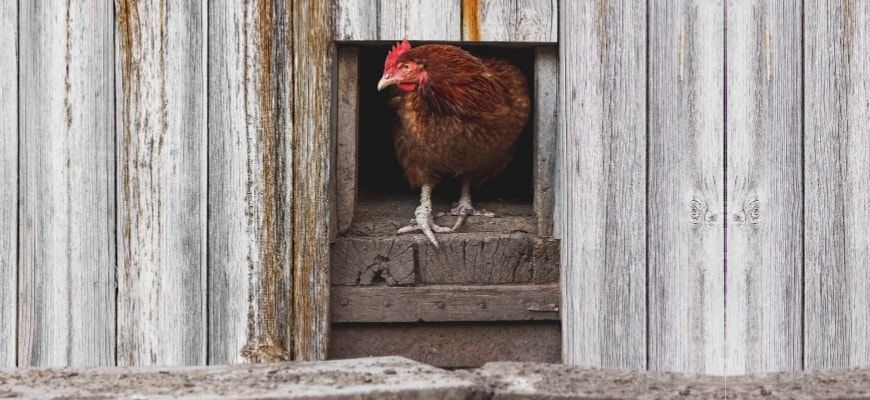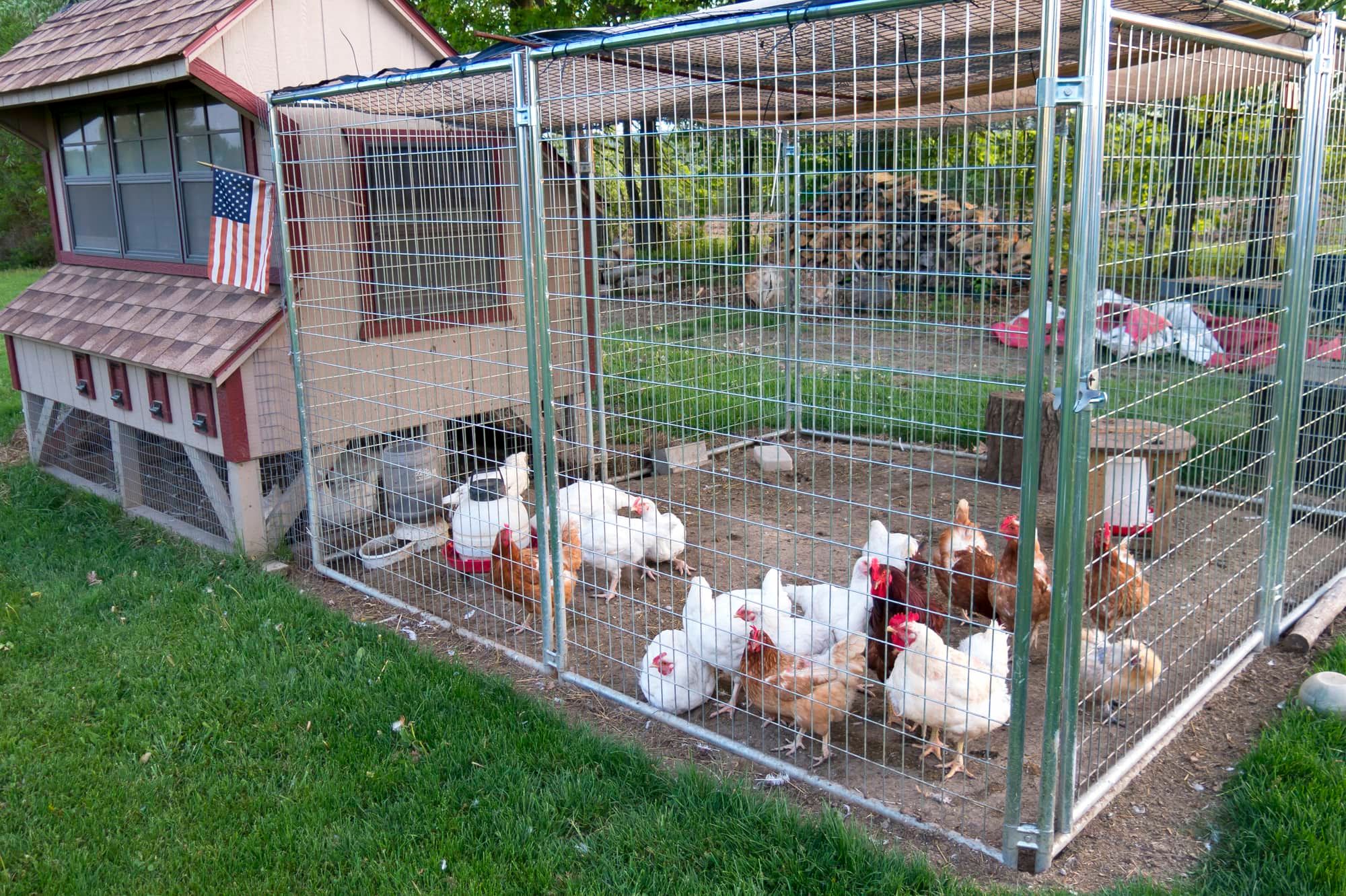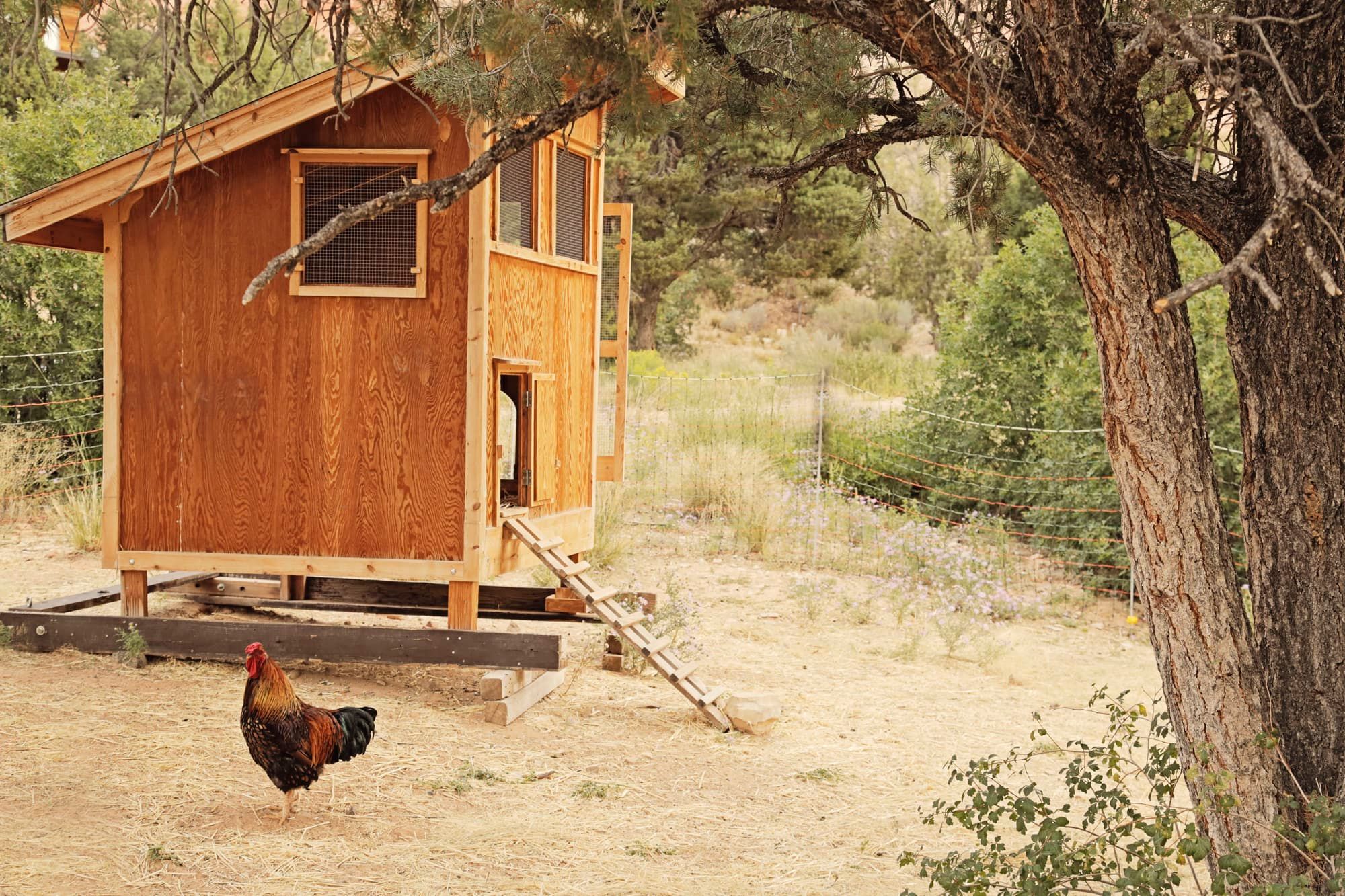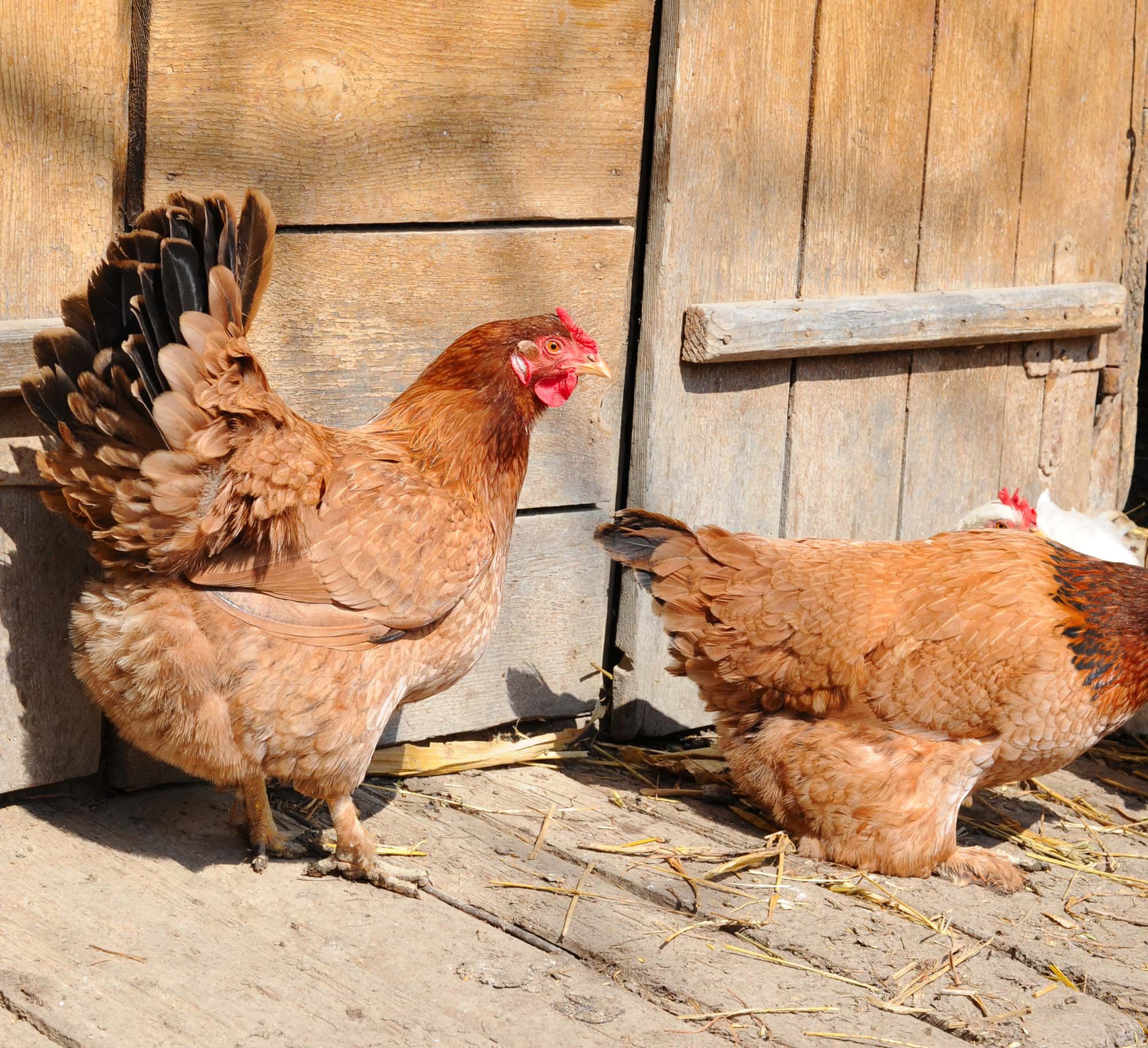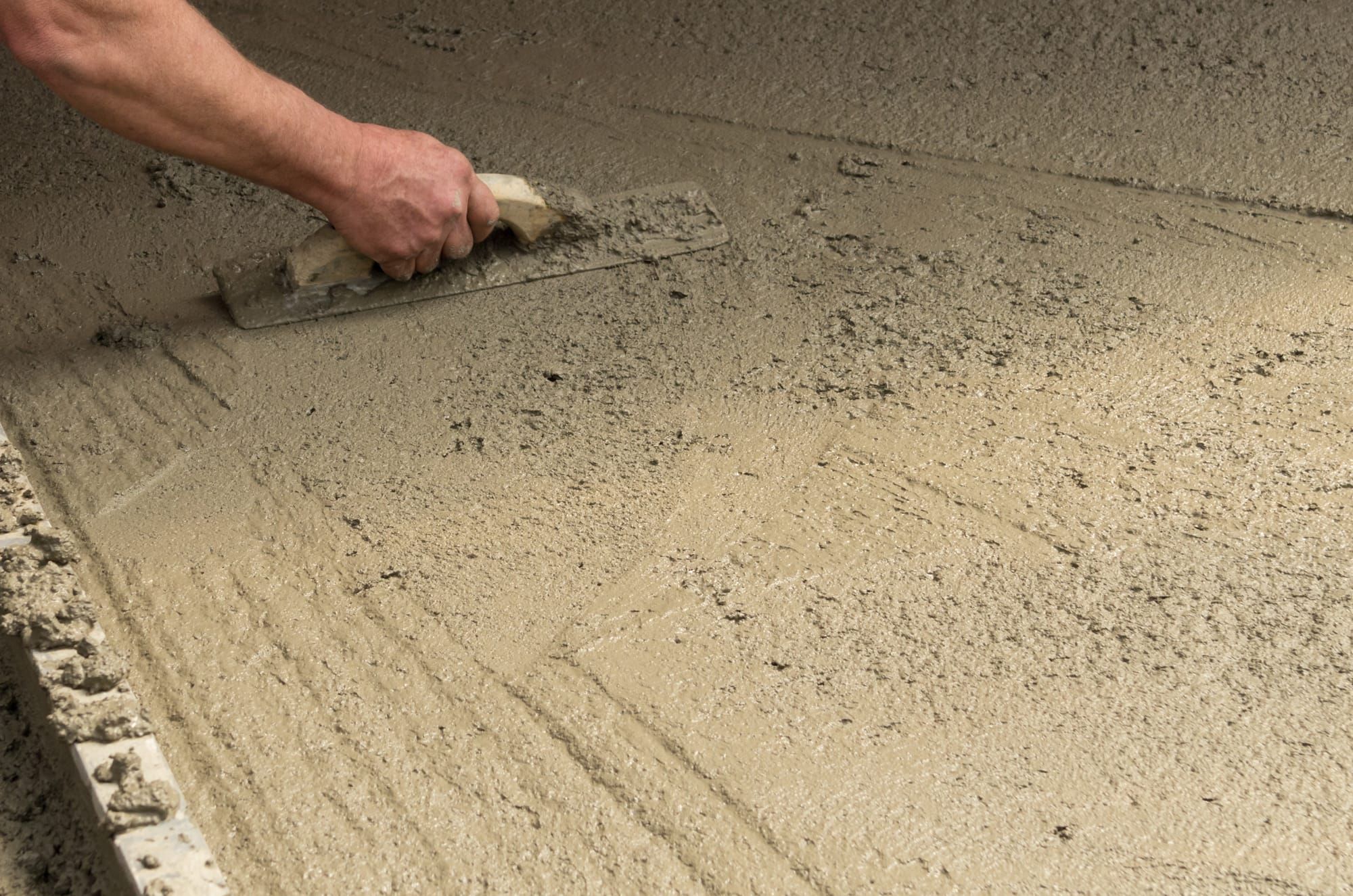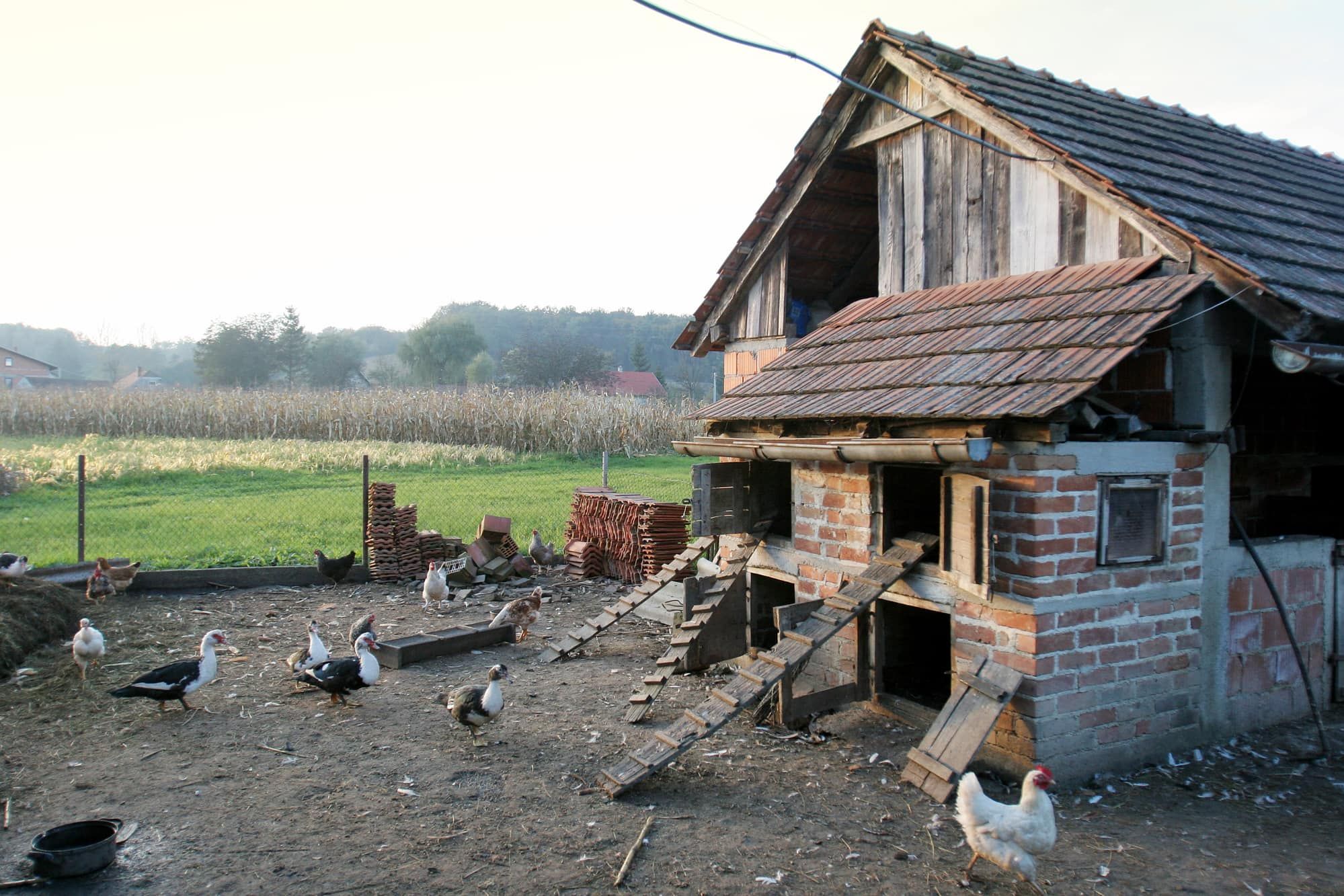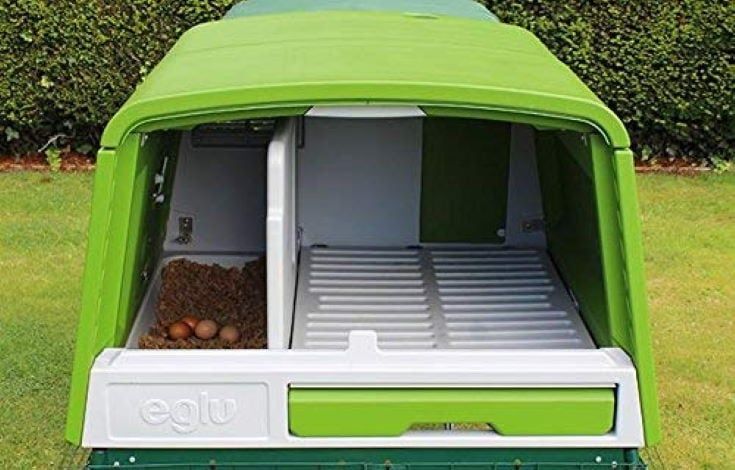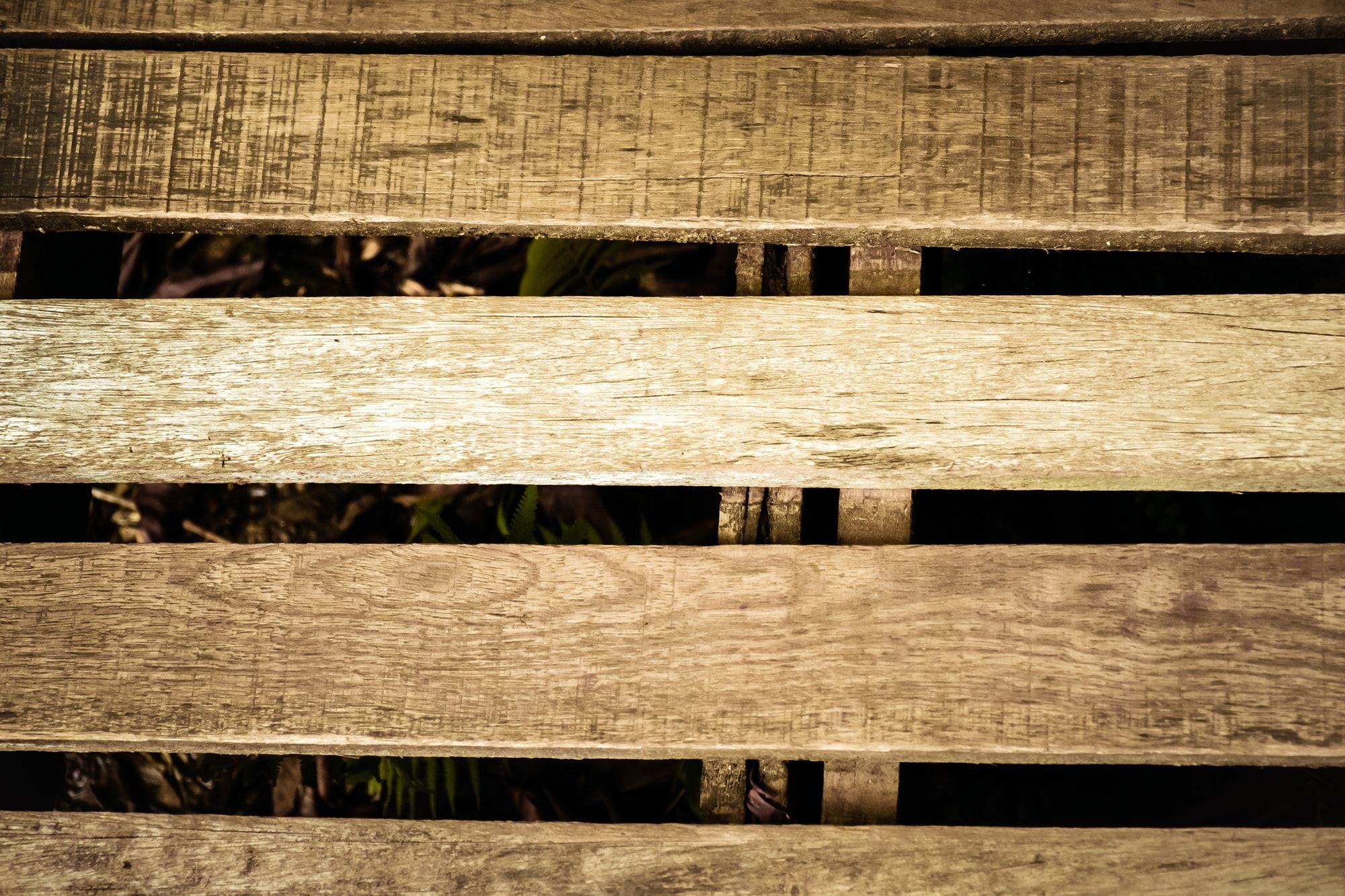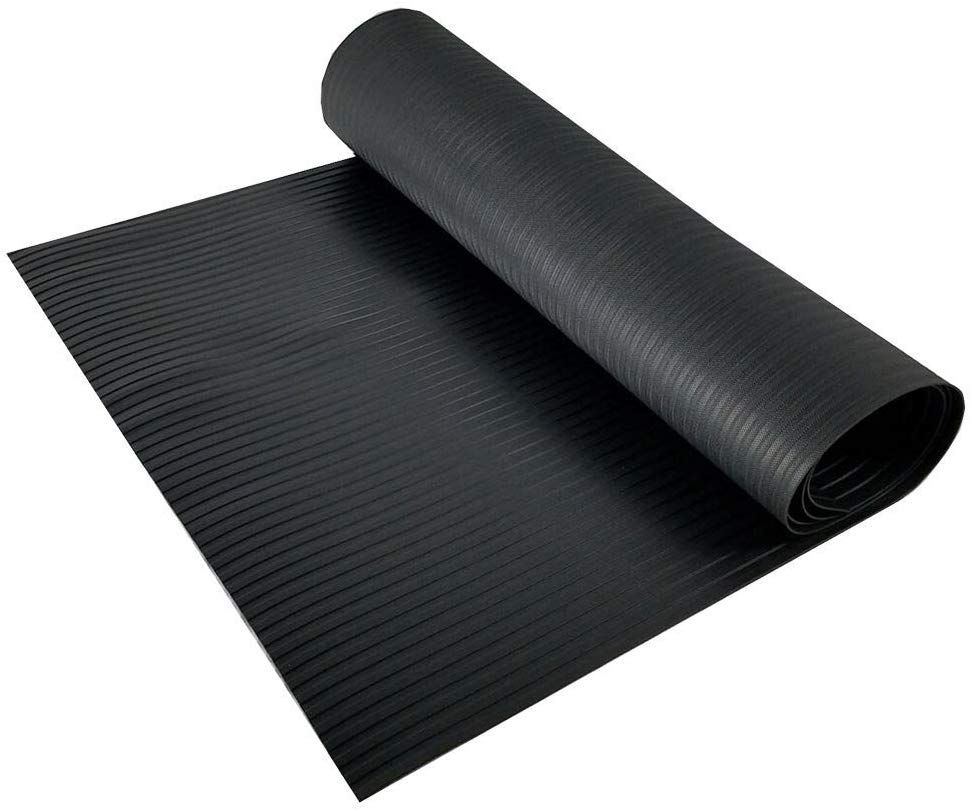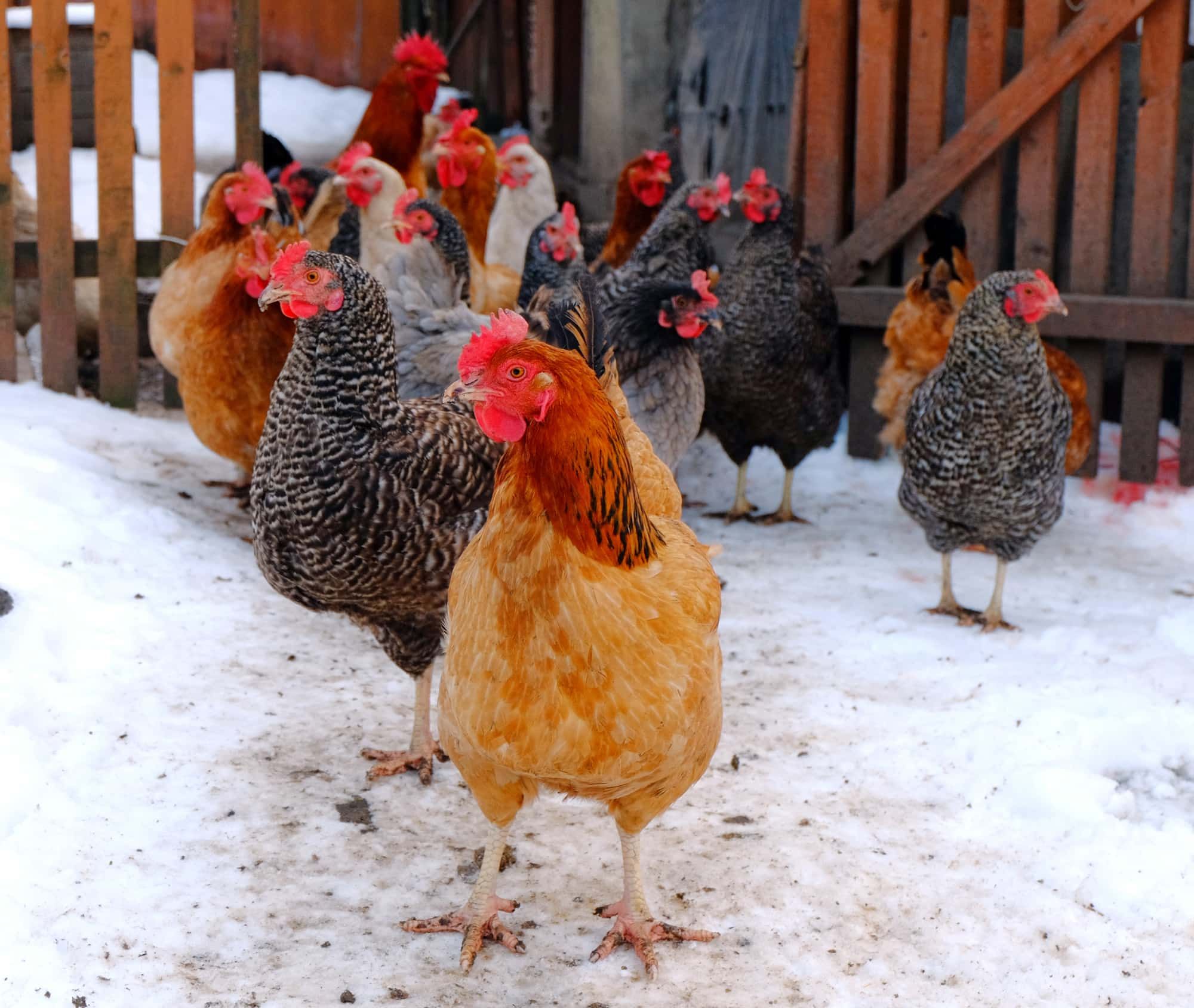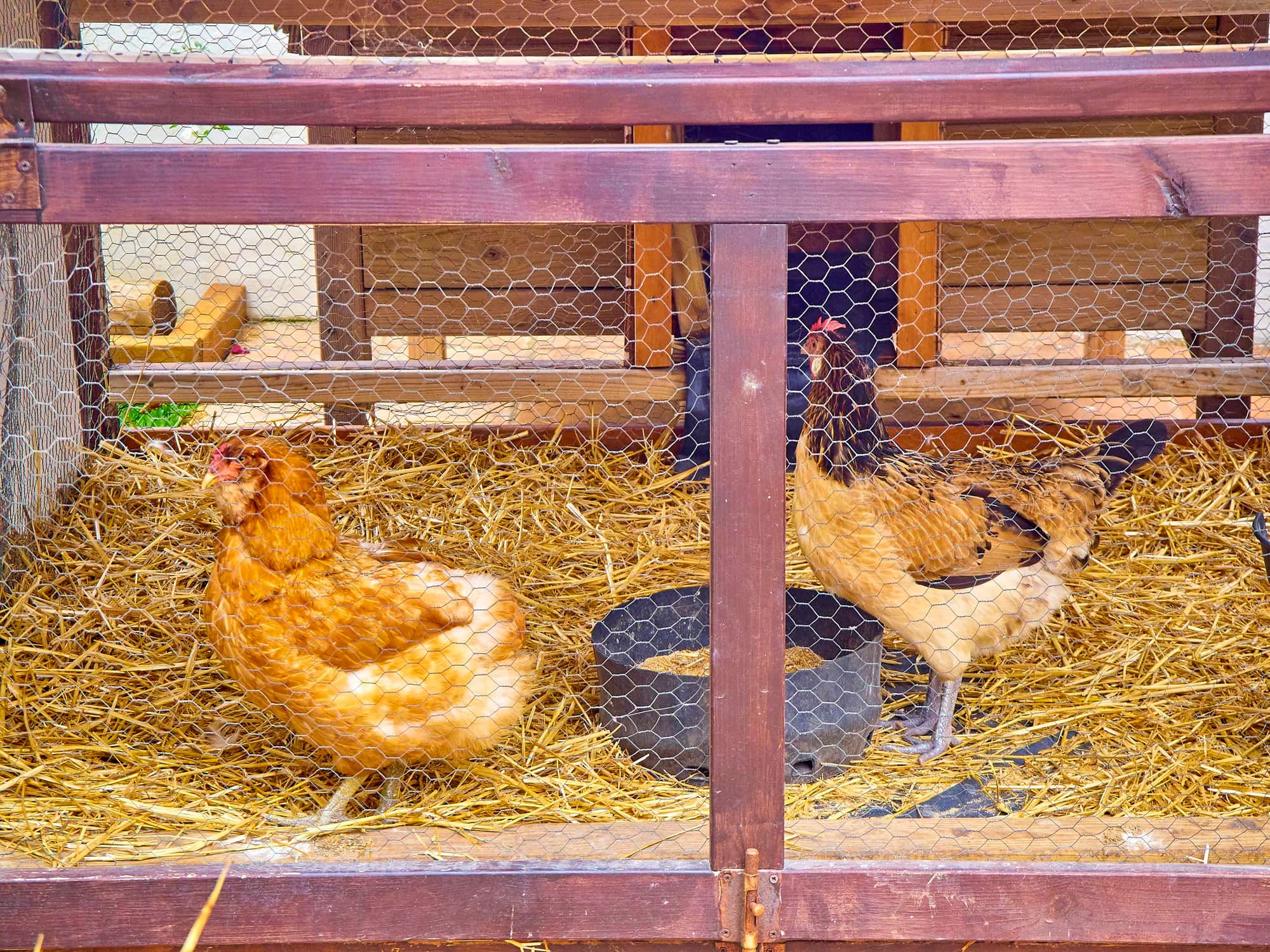Keeping chickens has become a popular hobby for both rural and urban dwellers. They are fairly simple to keep overall, easy to learn about, and are surprisingly social. Plus, they lay fresh eggs, and once you start in on fresh eggs you aren’t going to go back to store bought eggs anytime soon.
The protection and comfort you provide your egg laying ‘pets’ (or livestock, depending on how you view them) is important since happy chickens are productive chickens. This article explores a subject not often thought about: your choices concerning the best flooring for a chicken coop. Read on to determine which is the best for your coop.
Why Flooring Is Important
The flooring you install in your coop is an important consideration. Depending on where you live, you might want to take into consideration a few details pertaining to how well various materials will hold up over time. Also, you might want to ask yourself how easy it is to clean. Climate, weather, coop location, and even things like the other animals you have present, or predatory issues you may have locally, should all be considered.
One of the most important things to think about is what is going to work for your specific situation. If you are not going to have the time to be constantly changing out and cleaning a coop floor, you may want something more permanent. If you live in a rented home, a floor that you can bring with you when you leave might be the best idea. When raising chickens, the important thing is consistency and keeping them comfortable, so if you know what works for you, picking a floor type that fits into that is essential.
I’ve literally lived in and kept chickens in various climes in dramatically different situations and certainly have my preferences. It is important to say that you can most likely make do with just about any option you choose, but there are some pros and cons you might want to consider if you haven't made up your mind. This is important whether your chicken coop is up off the ground or is laid level with the ground.
Consider Coop Style
The type of coop you have may already determine what flooring options you are dealing with. Many prefab coops may already be designed with a wipe-clean or removable flooring option, while converting sheds or building your own coop will require you to determine what options you have.
If you are building your coop from the ground up, consider choosing a flooring that will work for your specific needs. For example, a coop with a wooden floor is going to require a lot of cleaning and maintenance that a plastic or vinyl floor just won't need. Only you can know what your chickens are comfortable with and what makes them the most productive. Finding a good balance between that and what you are able to keep up with will determine what coop style you choose, and what the flooring in that coop will be.
Some styles of coops make it easy to replace or convert your flooring over time, but it doesn’t hurt to have some insight under your belt before getting started so you can anticipate problems- or try and avoid them altogether. The important thing to remember is the best chicken coop style is the one that keeps your chickens happy and healthy and provides you easy access for their care.
The Pros and Cons of Various Flooring Material
My initial foray into keeping chickens came in a far Northern climate with free-range chickens in an open horse barn and was more or less inherited. The chickens were half-wild, savvy with survival, and roosted in the uppermost loft beams far out of reach of predators. When they squirreled away a nest to hatch their brood, they exhibited signs of aggression bordering on fertility and thus were more or less left to their own devices. In short, they really didn’t teach me a whole lot other than they are a pretty hardy species despite their delicate appearance.
It wasn’t until I once again moved and inherited a set-up specifically for raising poultry that I began to learn the needs of the domesticated chicken from hatch to full maturity and production. Since then I have been lucky enough to see a variety of flooring material put in use in both backyard coops, as well larger commercial buildings.
One thing I can say is, a floor is a floor. Some will be easier than others, some will be more strong than others, and some may end up being less than what you expected. The floor is probably the least important part of your coop (I’m sure somebody is disagreeing with me somewhere and that’s okay), but having an opinion about your choices is good practice.
Wood
Wood flooring is probably the most common flooring material you will see used for a variety of reasons. For starters, it is often already included in many types of buildings, such as sheds or storage rooms that are often converted into chicken coops. It is affordable as well, and easy to incorporate into homemade coop designs. I have consistently used wood flooring in various coops through the years and have one in place now.
However, there are a few things to consider with wood flooring. For starters, you will eventually have to replace it. A well-laid wood floor will most definitely repel rodents and provide a solid foundation, especially if you have it raised up off the ground, but even treated wood designed for exterior use eventually rots.
It is also hard to clean as dirt, debris, and waste will fall into the cracks and texture of the wood grain. You can extend the life of your wood flooring using various techniques. Laying linoleum or vinyl over it, spraying with a flex seal, or providing rubber matting makes clean up easier and helps keep moisture from seeping into the wood.
Currently, I have a rubber mat over my floor but the edges under the coop door is beginning to show signs of water damage and warping. Wood works best in dry climates as well.
|
Pros |
Cons |
|
|
If you live in an extremely wet area, like the Pacific Northwest, a more permanent and durable flooring surface will be necessary. No matter how water-tight your coop might be, moisture will still make its way inside it and that will wreak havoc on your wood flooring. Consider laying a concrete floor if you live in an area with heavy rainfall or humidity.
Concrete
Concrete is by far the best flooring option you can consider. Although you have to have a level surface at ground level to implement it, it keeps rodents from burrowing in, is easy to clean and sanitize, and rarely leaves room for poultry-related lice and mites to hide.
It is also the most expensive to lay as it requires the leveling of the ground, materials, and manpower to do so. By all means, it is a project you can do on your own to save money, but it is best to research what this entails in advance.
This type of flooring also makes your coop permanent and basically dictates that you will be building a coop up and over the slab you have poured. It will pretty much last forever and keep you from having to put money into replacing it.
|
Pros |
Cons |
|
|
If you live in a rented home, a cement floor may not be a good option. Even though your landlord may be okay with it, you will want to install a coop that you can take with you when you move. That way, you aren't investing a lot of time and money into something that you will have to leave at a place you no longer live. Plus, your chickens will get used to that type of floor and may have a hard time acclimating to a new coop should the time come.
Dirt
Dirt is also a highly popular choice simply because it’s already in place. When choosing the location of a coop that will have a dirt floor you need to ensure that it is not an area where water settles when it rains or from snowmelt. You will need to level it and tap it smooth to get started- and that will probably be the nicest it will even look because once your chickens move in they are going to have a field day.
Dirt isn’t a bad choice, but you may find that rodents can burrow into your coop. Since chickens are omnivores, chances are they will see this as an excellent opportunity to supplement their diet, but be aware of the diseases that could possibly spread. You also don't want to create a type of environment that is attractive to rodents in the first place. A more solid flooring for your chicken coop will make it secure from pests and keep them not only out of the coop but out of your yard.
Chickens are also going to scratch and dig at the dirt to take dust baths in. If you have chickens you know they like to create craters do so in their yard no matter what you provide for them to use, and your coop floor is no exception. This is not a problem unless you are struggling to find footing in the coop itself. If so, buy some concrete pavers and make a walkway for yourself.
|
Pros |
Cons |
|
|
Plastic
Image credits: Eglu via Amazon
Plastic flooring is a common option in certain prefab chicken coops. Slide-out trays, slotted nesting floors, or flat plastic linings are all commonly seen. These are easy to clean and disinfect, and surprisingly durable.The biggest drawback to this is that they are not sustainable for large coop flooring areas and are best used in small, raised coops for small flocks. You could potentially buy several smaller plastic flooring pieces and combine them, should you want to create a bigger coop, but this may be more trouble than it is worth.
|
Pros |
Cons |
|
|
Plastic is not nearly as durable as you will need for long-term use with larger flocks. You could end up having to replace sections more often than is needed for them to be worthwhile. In this case, you might be better off with a wire and batten floor or a simple wood floor.
Wire and Batten
You may also see smaller, raised coops use a wire and batten flooring. Personally, I do not like this design, but it works well for many. Battens are strips or lathes of wood that are evenly spaced. Chicken wire, or other livestock small wire, is then rolled over the top to allow dirt and waste to fall through. You can also make them larger and sturdy enough to hold the weight of a human.
The benefit of this design is that they are removable for cleaning and serve to allow the passage of the majority of droppings for easy cleaning. Issues that arise concerning the time it takes to raise each section to clean and dry before replacing as well as the fact the wood will begin to rot over time. All dropping may not fall through either, forcing you to clean it in place periodically.
|
Pros |
Cons |
|
|
Rubber Mats
Rubber mats aren’t a true flooring solution per se, as it is a covering you can use with just about any other flooring option to make cleaning easier and help protect the floor you have in place. Rubber mats pretty much last forever and are popular for more than just chicken coops.
The nice thing about rubber mats is that they can be used with any coop flooring and can keep wooden floors from rotting due to droppings, dirt, and rain. It may be a good idea to use them for any type of floor you have and get your chickens used to them. That way, the mats can simply be put in a new coop if you get one and the chickens won't be disturbed by a new type of flooring. This also makes them a good option for people who rent their homes, since they can be easily moved if need be.
I currently am using a plastic mat custom fit to my coop floor to help protect it and make clean up easier. They are easy to cut so you get good coverage, and can be affordable for smaller coop sizes. Larger, thicker mats exist as well for larger spaces. They can serve as a protective lining for dog kennels and even work well for horse stalls as well. I have personally used them in stalls and also seen them used in dairies so can speak to their strength.
|
Pros |
Cons |
|
|
Flooring Designs
When you first think of flooring you probably think of a permanent, solid foundation, but this doesn't always have to be the case. It also doesn’t have to be a solid floor since various designs can work well and be perfectly usable. As seen above, everything from permanent to slatted to removable floors exist for you to consider. Of course, the size of your coop and whether you have it raised or flat on the ground may determine some choices as well.
Flooring Covering
Wondering what to put on the floor of a chicken coop? Keeping your coop clean is a big part of your chicken’s health and the chicken coop ‘bedding’ or floor covering you use is a big part of this as well. This is often a hot topic of debate about which type is best, but honestly, I have discovered that various bedding work just as well as others and it is completely up to you what to use. After all, you are the one cleaning it and replacing it.
To use bedding you layer it across your coop floor and within the nesting boxes. Nesting boxes also require a soft material your hens can make a nest out of for comfort and egg protection. Shavings, grasses, straw, and shredded paper is popular for this. The important thing is to experiment and find the material that your flock is the most comfortable and productive with.
Sand
Sand is a great way to add a layer of absorption and easy to clean material to your dirt or wooden floors. Just be sure to use construction sand and do this with floors that lay flat to the ground as it adds quite a bit of extra weight.
It's also important to remember that sand will have to be periodically changed. It will absorb any moisture that ends up on it and can turn into a clay-like substance if you live in a wet area or if you have a large flock. This will require you to dig out all the old sand and replace it. If this is not something you can do on at least a quarterly basis, you may want to avoid it.
Straw
Straw is also a good choice, but is not highly absorbable, so if you live in a wet climate it may become musty and not help absorb the moisture within the coop. Some people prefer not to use it, but I like to use it with wood shavings since I live in a very dry climate as it stays nice and "fluffy" and allows my chickens to have good insulation.
Pine Shavings
Pine shavings are probably the most popular flooring cover as it is inexpensive, easy to lay, absorbs moisture well and allows you to clean easily with very little waste. I like to layer it a few inches deep over the coop floor and then place straw on top. The combination helps keep droppings from working their way to the floor for easy cleanup. On this note- avoid cedar shavings as their strong smell may be problematic to chickens.
Shredded Paper
If you shred paper regularly don’t toss those bags, instead use them in your chicken coop to provide a layer of insulation and absorption. It also works great for nesting. Once soiled you can just toss it in a compost pile!
Shredded paper is also not as durable as some of the other materials mentioned above. If you have a large flock, straw or pine shavings are going to be your best bet. Shredded paper will deteriorate with moisture and not hold up as well as you may need it to.
Dried grasses, leaves, and hay are also mentioned at times for use, but you may want to avoid them as they have high food content and will be more likely eaten by your chickens than left to help protect the floor and help keep a healthy, comforting coop atmosphere.
Your Chicken Floor, Your Choice
So there you have it: a complete breakdown of the most common chicken coop flooring options people turn to. Of course the best option for you is one that works best with your own needs and budget. A concrete floor is arguably the best for cleaning and rodent control, but if you have a raised coop, or want the option to move your coop eventually, this isn’t going to be a choice you make.
Everything from wood, wire, and plain ol’ dirt can be used to floor your coop. Just be sure to provide a thick layer of bedding for insulation and moisture control! If you are looking to try and get your floor options to last longer or keep easy to clean, consider installing a rubber mat as well.
If you have any questions or comments please let us know below. And, as always, please share!

